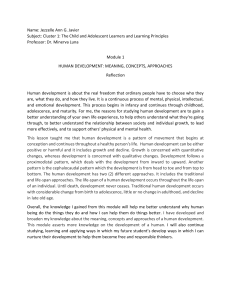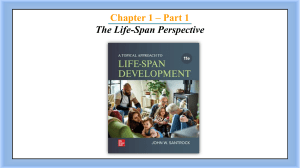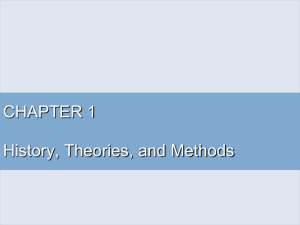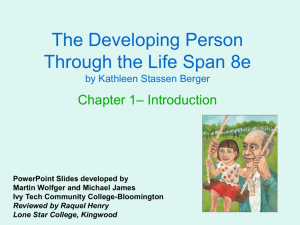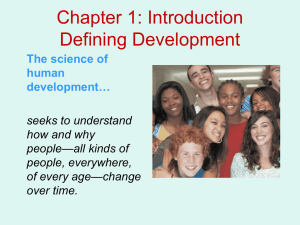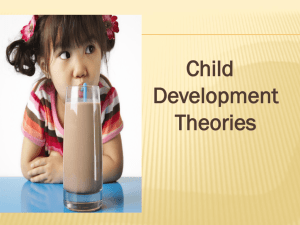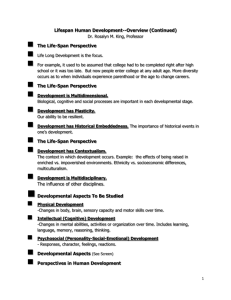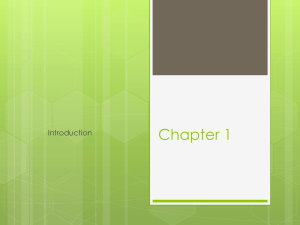Basic Concepts and Issues on Human Development
advertisement
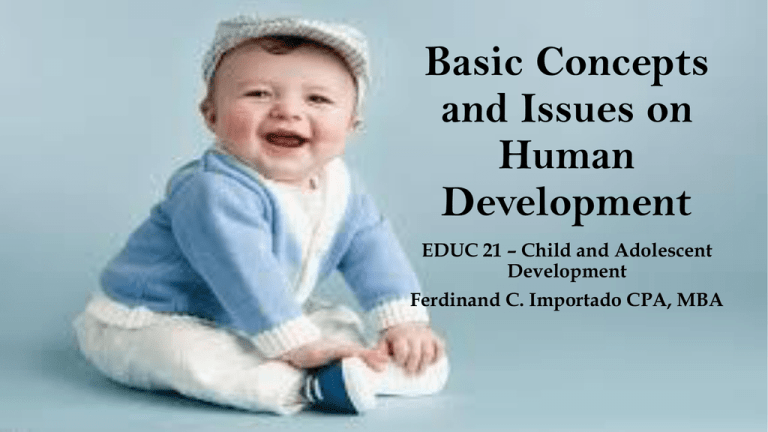
Basic Concepts and Issues on Human Development EDUC 21 – Child and Adolescent Development Ferdinand C. Importado CPA, MBA Human Development • Human development is the pattern of movement or change that begins at conception and continues through the life span. • It includes growth and decline. • Development can be positive or negative. Some Major Principles of Human Development Principle 1 Development is relatively orderly. Proximodistal pattern The muscular growth of the trunk and the arms comes earlier as compared to the hands and fingers. Cephalocaudal pattern During infancy, the greatest growth always occurs at the top – the head – with physical growth in size, weight and future differentiation gradually working its way down from top to bottom. Principle 2 While the pattern of development is likely to be similar, the outcome of developmental process and the rate of development are likely to vary among individuals. Principle 3 Development takes place gradually. Principle 4 Development as a process is complex because it is the product of biological, cognitive and socio-emotional process. Biological Involves changes in the individual’s physical nature. Cognitive Involves changes in the individual’s thought, intelligence, and language. Socio-emotional Includes changes in the individual’s relationship with other people, changes in emotions, and changes in personality. Approaches to Human Development Traditional Human development shows extensive change from birth to adolescence, little or no change in adulthood and decline in the late old age. Life-span Human development occurs al throughout the life-span of an individual. Characteristics of Life-span Development Life-long It does not end by adulthood and no development stage dominates the development. Multi-dimensional Development consists of biological, cognitive, and socioemotional dimensions. Plastic Development is possible throughout the life-span. Contextual Individuals are changing beings in a changing world. Growth, maintenance and regulation These are considered goals in that varies in every developmental change. Principles of Child Development and Learning that Inform Practice All the domains of development and learning (physical, social, emotional and cognitive) are important and closely-related. Many aspects of children’s learning and development follow well documented sequences, with later abilities, skills, and knowledge building on those already acquired. Development and learning proceed at varying rates from child to child, as well as at uneven areas across different areas of a child’s individual functioning. Development and learning result from a dynamic and continuous interaction of biological maturation and experience. Early experiences have profound effects (cumulative and delayed) on a child’s development and learning; and optimal periods exist for certain types of development and learning to occur. Development proceeds toward greater complexity, self regulation, and symbolic or representational capacities. Children develop best when they have secure, consistent relationships with responsive adults and opportunities for positive relationship with peers. Development and learning occur in and are influenced by multiple social and cultural contexts. Always mentally active in seeking to understand the world around them, children learn in a variety of ways; a wide range of teaching strategies and interactions are effective in supporting all these kinds of learning. Play is an important vehicle for developing self-regulation as well as promoting language, cognition and social competence. Development and learning advance when children are challenged to achieve at a level just beyond their current mastery, and also when they have many opportunities to practice, newly acquired skills. Children’s experiences shape their motivation and approaches to learning such as persistence, initiative, and flexibility; in turn, these dispositions and behaviors affect their learning and development.
